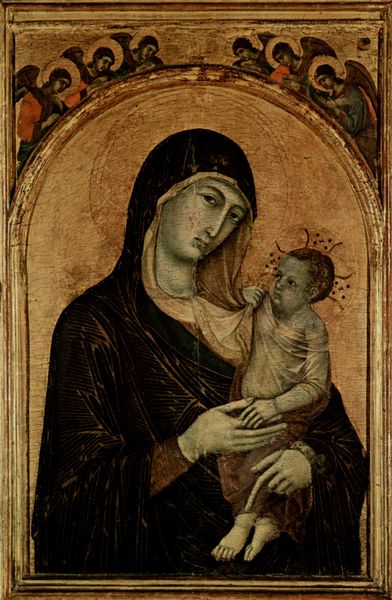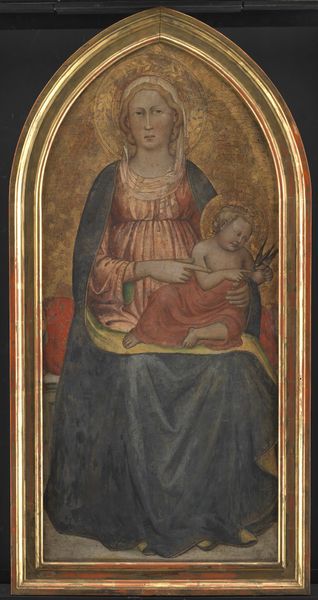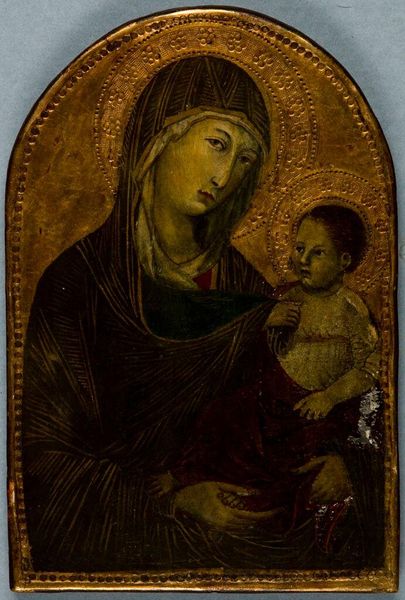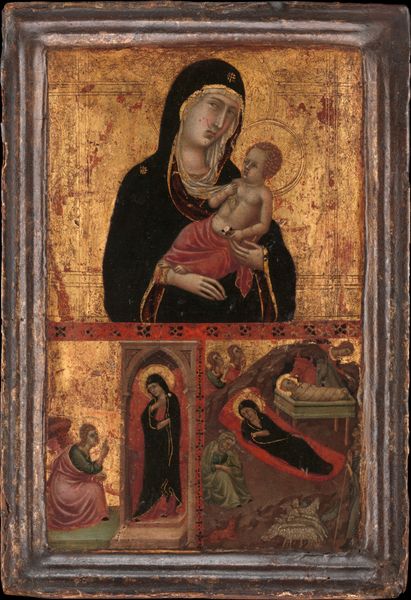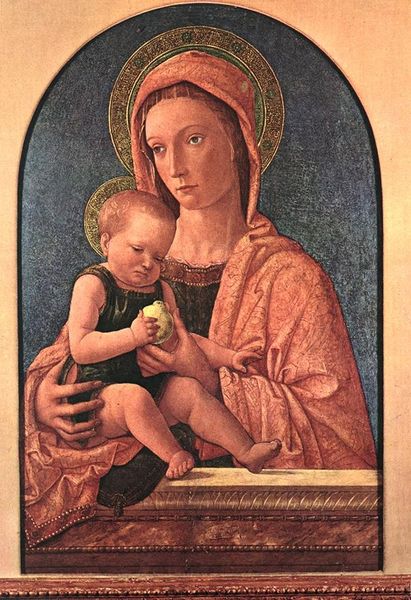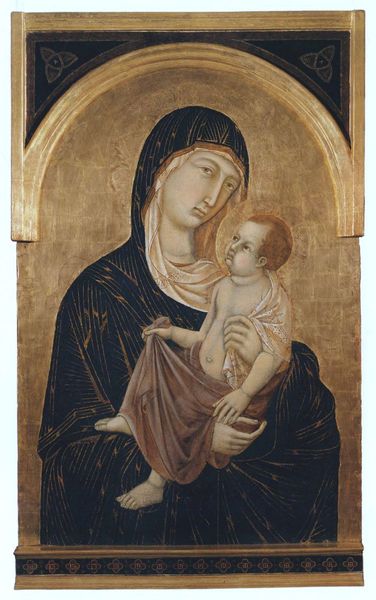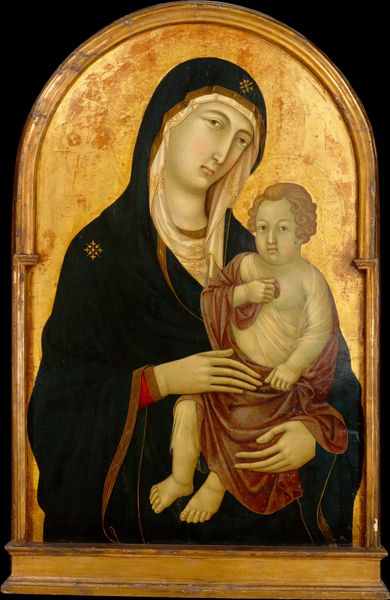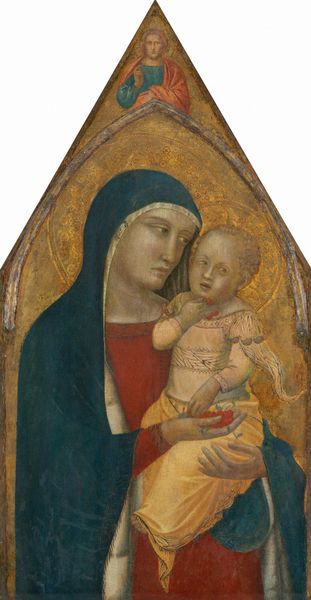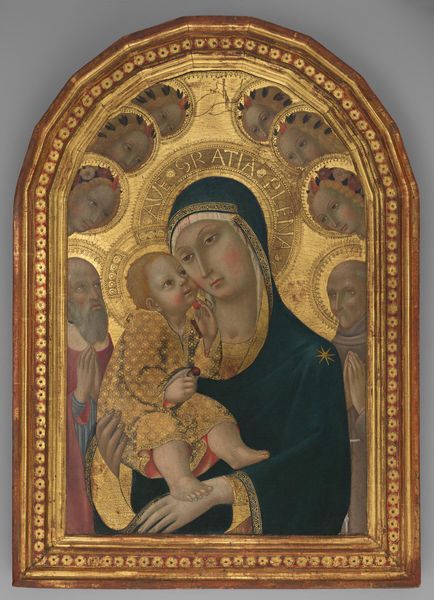
panel, painting, oil-paint
#
portrait
#
medieval
#
panel
#
painting
#
oil-paint
#
figuration
#
oil painting
#
history-painting
#
academic-art
#
italian-renaissance
#
early-renaissance
Dimensions: height 111 cm, width 54 cm, height 145 cm, width 76 cm, depth 12 cm
Copyright: Rijks Museum: Open Domain
Pseudo-Ambrodigio di Baldese’s “Virgin and Child,” presents us with a tableau of formal austerity and devotional symbolism. The subdued palette and the symmetrical composition contribute to the work’s serene and contemplative atmosphere. The arrangement of Mary and the Christ Child is not merely representational but also functions as a structural device. Notice how the lines of Mary’s cloak and the folds of her dress create a visual anchor, grounding the composition. This stability contrasts with the more ornate details of the gold-leaf background and the decorative patterns of Mary’s garments. The artist’s use of line and form suggests an attempt to reconcile the earthly and the divine, the material and the spiritual. The flatness of the picture plane and the limited use of perspective serve to emphasize the iconographic function of the image. This aligns with a broader artistic and philosophical concern with the nature of representation and the role of images in conveying meaning. In its formal qualities, the painting operates within a system of signs, inviting us to decode its visual language and to consider the cultural codes that inform its making and reception. The artwork invites ongoing interpretation and re-interpretation of its visual and cultural meanings.
Comments
No comments
Be the first to comment and join the conversation on the ultimate creative platform.
